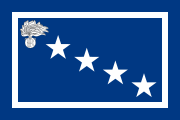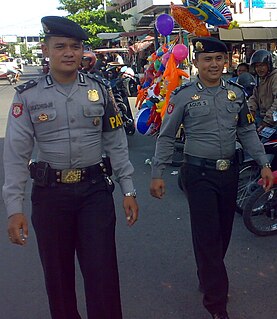
The Italian Social Republic, popularly and historically known as the Republic of Salò, was a German puppet state with limited recognition that was created during the later part of World War II, existing from the beginning of German occupation of Italy in September 1943 until the surrender of German troops in Italy in May 1945.
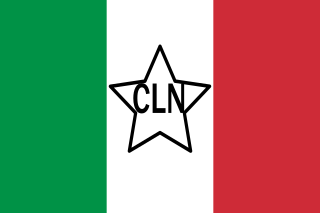
The Italian resistance movement is an umbrella term for Italian resistance groups during World War II. It was opposed to the forces of Nazi Germany as well as their puppet state local regime, the Italian Social Republic, especially following the German military occupation of Italy between September 1943 and April 1945, though the resistance to the Fascist Italian government began even prior to World War II. The movement that rose among Italians of various social classes is also known as the Italian resistance and the Italian partisans, and the brutal conflict they took part in is referred to as the Italian Liberation War or as the Italian Civil War. The modern Italian Republic was declared to be founded on the struggle of the Resistance.
Italian war crimes have mainly been associated with Fascist Italy in the Pacification of Libya, the Second Italo-Ethiopian War, and World War II.

The Armistice of Cassibile was an armistice signed on 3 September 1943 by Walter Bedell Smith and Giuseppe Castellano, and made public on 8 September, between the Kingdom of Italy and the Allies during World War II. It was signed at a conference of generals from both sides in an Allied military camp at Cassibile in Sicily, which had recently been occupied by the Allies. The armistice was approved by both King Victor Emmanuel III and Italian Prime Minister Pietro Badoglio. The armistice stipulated the surrender of Italy to the Allies.

Monteleone di Puglia is a hill town and comune of the province of Foggia in the Apulia region of south-eastern Italy.

Ettore Muti was an Italian aviator and Fascist politician. He was Party Secretary of the National Fascist Party from October 1939 until shortly after the entry of Italy into World War II on 10 June 1940.
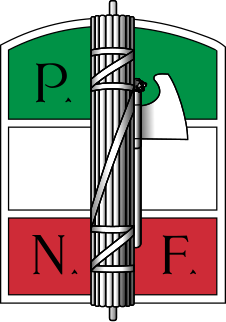
The National Fascist Party was an Italian political party, created by Benito Mussolini as the political expression of fascism. The party ruled Italy from 1922 when Fascists took power with the March on Rome to 1943, when Mussolini was deposed by the Grand Council of Fascism.

The Italian National Republican Guard was a gendarmerie force of the Italian Social Republic created by decree on December 8, 1943, replacing the Carabinieri and the National Security Volunteer Militia (MVSN). General Renato Ricci appointed as its commandant. Major General Italo Romegialli was appointed vice commandant and Major General Nicolò Nicchiarelli became the chief of general staff.

The 2nd Alpine Division Tridentina was a World War II Mountain Infantry division of the Italian Army. The Alpini that formed the divisions are a highly decorated and elite mountain corps of the Italian Army comprising both infantry and artillery units. After World War II, the traditions and name of the 2nd Alpine Division Tridentina were carried on by the Alpine Brigade Tridentina.
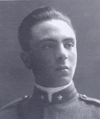
Carlo Scorza was a prominent member of the National Fascist Party of Italy during World War II. He built his reputation in the Fascist paramilitary group known as the Blackshirts, and later rose to the position of party secretary, second only to Benito Mussolini in authority over the wartime Italian state. His brief and rocky tenure began in the spring of 1943 and ended with the party's collapse and abolition at the end of July.

Fascism in Europe was composed of numerous ideologies that were present during the 20th century and they all developed their own differences with each other. Fascism was born in Italy, but subsequently several fascist movements emerged across Europe and they borrowed influences from the Italian Fascism. The origins of fascism in Europe began outside of Italy and can be observed in the combining of a traditional national unity and revolutionary anti-democratic rhetoric espoused by integral nationalist Charles Maurras and revolutionary syndicalist Georges Sorel in France. The first foundations of fascism can be seen in the Italian Regency of Carnaro, many of its politics and aesthetics were taken from Gabriele D'Annunzio's rule and they were subsequently used by Benito Mussolini and his Italian Fasci of Combat which he founded five months prior in 1919. Despite the fact that its members referred to themselves as "fascists" the ideology of fascism wouldn't fully develop until 1921 when Mussolini transformed his movement into the National Fascist Party which then in 1923 incorporated the Italian Nationalist Association. The INA was a nationalist movement that established fascist tropes, colored shirt uniforms for example, and also received the support of important proto-fascists like D'Annunzio, Alfredo Rocco and Enrico Corradini.

Giacomo Suardo was an Italian lawyer and politician. He served as President of the Italian Senate from 1939 to 1943.

Angelo Cerica was an Italian general and senator.
This is a list of words, terms, concepts, and slogans in the Italian language and Latin language which were specifically used in Fascist Italian monarchy and Italian Social Republic.
General elections were held in San Marino on 4 March 1923 to elect the seventh term of the Grand and General Council. It was a snap election which marked the beginning of the Fascist rule of the republic. Left-wing parties were prevented from participating, while all centre-right forces ran as a single "Patriotic Bloc". Of the 60 seats, 29 were taken by the Sammarinese Fascist Party, 20 by the Sammarinese People's Party, 9 by the Sammarinese Democratic Union and two by the Fascist-puppets Volunteers of War. Later the country was taken over by the Fascist Party.
Manlio Morgagni was an Italian Fascist, journalist, former mayor of Milan, former member of the Senate of Italy, and director of the prominent news agency Agenzia Stefani during a period when it was closely aligned with the Fascist regime of Benito Mussolini.
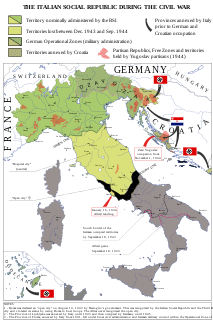
The Holocaust in Italy was the persecution, deportation, and murder of Jews between 1943 and 1945 in the Italian Social Republic, the part of the Kingdom of Italy occupied by Nazi Germany after the Italian surrender on September 8, 1943, during World War II.

Fascist Italy is the era of National Fascist Party government from 1922 to 1943 with Benito Mussolini as head of government of the Kingdom of Italy. The Italian Fascists imposed totalitarian rule and crushed political and intellectual opposition, while promoting economic modernization, traditional social values and a rapprochement with the Roman Catholic Church. According to Payne (1996), "[the] Fascist government passed through several relatively distinct phases". The first phase (1923–1925) was nominally a continuation of the parliamentary system, albeit with a "legally-organized executive dictatorship". The second phase (1925–1929) was "the construction of the Fascist dictatorship proper". The third phase (1929–1934) was with less activism. The fourth phase (1935–1940) was characterized by an aggressive foreign policy: Second Italo-Ethiopian War, which was launched from Eritrea and Somaliland; confrontations with the League of Nations, leading to sanctions; growing economic autarky; invasion of Albania; and the signing of the Pact of Steel. The fifth phase (1940–1943) was World War II itself with its disasters and defeats, while the sixth and final phase (1943–1945) was the rump Salò Government under German control.

